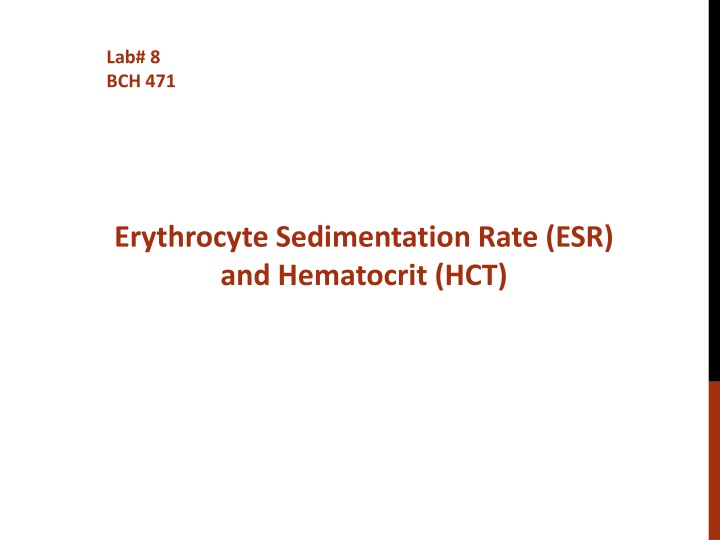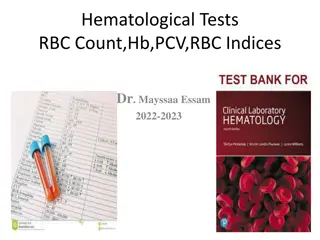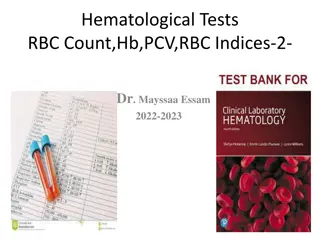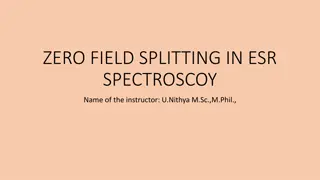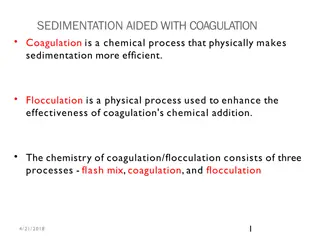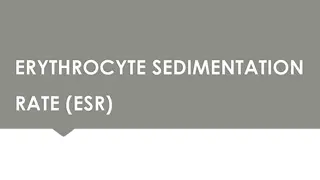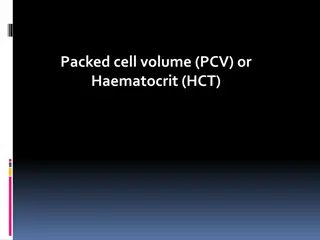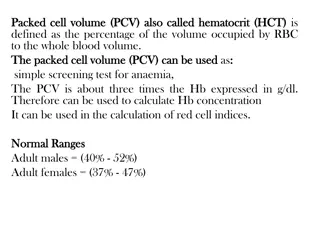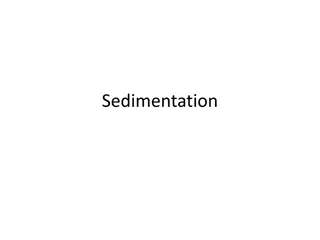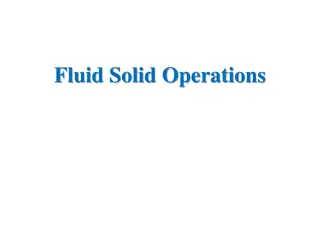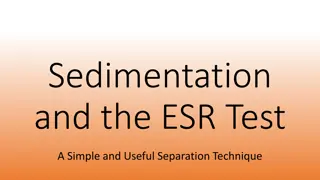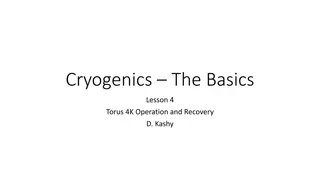Erythrocyte Sedimentation Rate (ESR) and Hematocrit (HCT) Analysis
In this lab, we discuss the determination of erythrocyte sedimentation rate (ESR) and hematocrit (HCT) to screen for ongoing disease processes. ESR measures the rate at which red blood cells sediment, while HCT indicates the percentage of red blood cells in blood. The procedures, principles, and calculations involved are explained. Normal ranges for males and females are provided. Explore the significance of these tests in clinical practice and their utility in identifying conditions like anemia, dehydration, and leukemia.
Download Presentation

Please find below an Image/Link to download the presentation.
The content on the website is provided AS IS for your information and personal use only. It may not be sold, licensed, or shared on other websites without obtaining consent from the author.If you encounter any issues during the download, it is possible that the publisher has removed the file from their server.
You are allowed to download the files provided on this website for personal or commercial use, subject to the condition that they are used lawfully. All files are the property of their respective owners.
The content on the website is provided AS IS for your information and personal use only. It may not be sold, licensed, or shared on other websites without obtaining consent from the author.
E N D
Presentation Transcript
Lab# 8 BCH 471 Erythrocyte Sedimentation Rate (ESR) and Hematocrit (HCT)
Objectives: 1) Determination of erythrocyte sedimentation rate (ESR). . 2) Determination of hematocrit (HCT).
Erythrocyte Sedimentation Rate (ESR) ESR, is s the rate at which red blood cells sediment in a period of one hour. It is used clinically as a non-specific screening test. ESR is not diagnostic of any particular disease, but rather is an indication that a disease process is ongoing and must be investigated.
Principle In this technique, anticoagulated whole blood are allowed to sediment under the effect of gravity, using a narrow vertical tube called Westergren s tube. This test is based on the fact that inflammatory and necrotic processes cause an alteration in blood proteins, resulting in an aggregation of RBCs, which make them heavier and more likely to fall rapidly when placed in a special vertical tube. The length of the column of clear plasma at the top is noted at the end of 1 hour. The normal values are: 0 to 15 mm/hr in men. 0 to 20 mm/hr in women. ESR is measured in millimeters per hour (mm/hr).
Hematocrit (HCT): HCT or packed cell volume (PCV) is the percentage (%) of RBCs in blood. Or the volume of red blood cells to the total volume of blood. It is used as a simple screening test for anemia. Blood is collected in heparinized capillary tube, which is then sealed, centrifuged and the red cell volume expressed as a percentage of the whole blood.
Calculation: HCT= Length of column of RBC Total length of blood component x 100 Normal ranges: Male: 40.7 - 50.3% Female: 36.1 - 44.3% Leukemia Dehydration Living in high altitude
